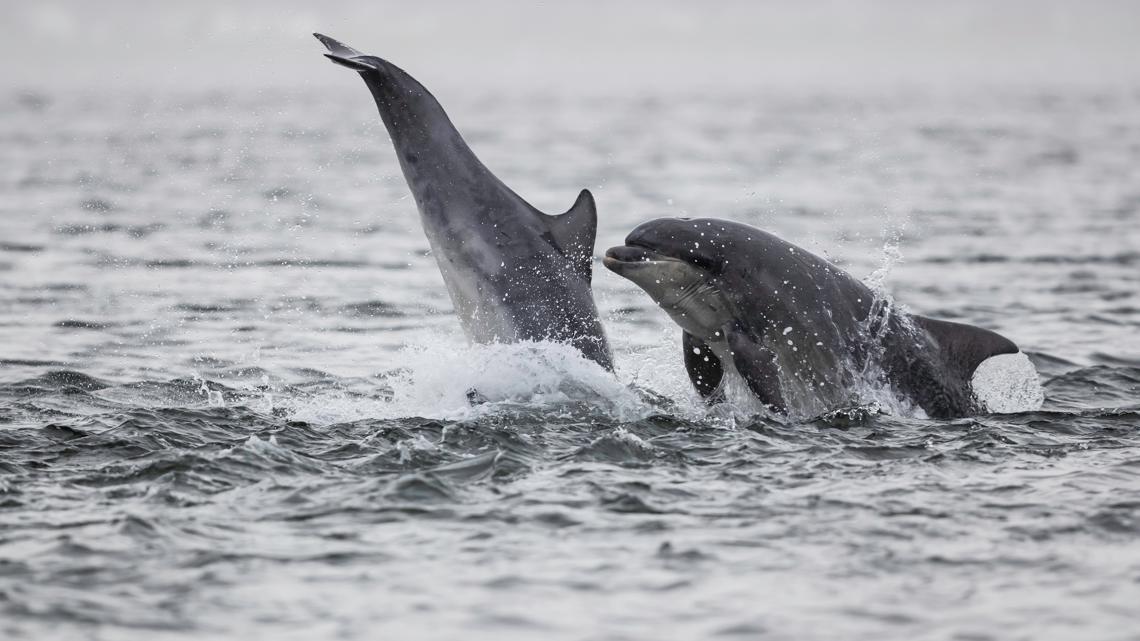INDIANAPOLIS — A new study revealed microplastics have been found deep inside the bodies of marine mammals, signaling for the first time that ingested plastics could lodge themselves in other parts of these animals bodies.
Microscopic plastic particles were found embedded in the bodies of two-thirds of marine mammals from a Duke University graduate student’s study of ocean microplastics. An estimated 68% of the animals had at least one microplastic particle stuck in at least one of four tissue types studied.
Those analyzed tissues included acoustic fat pads crucial for echolocation, blubber found under the skin, lung tissue and melon tissue, which is a fatty mound commonly found on the foreheads of marine animals.
“This is an extra burden on top of everything else they face: climate change, pollution, noise and now they’re not only ingesting plastic and contending with the big pieces in their stomachs, they’re also being internalized,” said Greg Merrill Jr. a fifth-year graduate student at the Duke University Marine Lab, in a statement about the study.


The deep location of microplastics, the study suggested, show that at least some of them move outside the digestive tract after ingestion, become permanently embedded and pose an exposure risk to both marine mammals and people.
“For people, exposure could be directly through consumption for those who rely on marine mammals as food and indirectly to peoples globally who consume the same prey resources as marine mammals,” the study reads.
Polyester fibers, a common byproduct of laundry machines, were most common ones found in tissue samples. Polyethylene, which is a common component of beverage containers, were also found in high amounts.
Blue plastic was the most common color found in all four types of tissue, according to the study.
Scientists are not yet sure what kinds of harm marine animals could suffer from the actual chemicals on plastics, but believe based on previous studies that their endocrine and hormonal systems could be disrupted.
“For example, acoustic tissues and blubber examined here are highly specialized organs unique to marine mammals affording the ability to echolocate prey," the study reads.
Samples were taken from the bodies of 32 stranded or subsistence-harvested animals over the course of two decades, between 2000 and 2021, in Alaska, California and North Carolina.
Twelve species of whales and dolphins were represented in the data, and included bottlenose dolphins, gray whales, pilot whales, pygmy sperm whales, spotted seals, ringed seals, beluga whales and one bearded seal.
Plastic is lipophilic, which means it loves lipids, the organic compounds that include fats, oils and hormones. Blubber, thick layers of fat underneath the skin of many marine mammals, naturally attract these small plastics and could, the study theorized, be one of the reasons why microplastics are found in greater amounts within these animals.
The plastic particles found in the whales and dolphins ranged from 198 microns to 537 microns, only slightly larger than a human hair, which is about 100 microns.
In addition to whatever risk chemical coatings on plastic pose to the animals, researchers think the plastic pieces can also tear them from the inside. Understanding how the small plastic pieces impact the actual health of these marine mammals is the next step for scientists, who will use cell lines grown from biopsied whale tissue to run toxicology tests of plastic particles to get insights.
“Now that we know plastic is in these tissues, we’re looking at what the metabolic impact might be,” Merrill said in a statement.
He said the findings underscore the sheer scale of the microplastics problem.
"We haven't done the math, but most of these microplastics probably do pass through the gut and get defecated. But some proportion of it is ending up in the animals' tissues," Merrill said. "For me, this just underscores the ubiquity of ocean plastics and the scale of this problem. Some of these samples date back to 2001. Like, this has been happening for at least 20 years."
The findings add to a growing body of research that shed light on the impact microplastics can have on marine life across the world. A filter-feeding blue whale feeding off the Pacific Coast of California might ingest 95 pounds of plastic waste per day, a 2022 report published in the journal "Nature Communications" estimated. Baleen whales, specifically, are thought to consume between 200,000 and 10 million microplastic particles indirectly through contaminated prey each day.
Occurrence of plastic ingested by marine fish has more than doubled in the last decade, and fish are consuming plastic more frequently, according to a 2021 study.
Researchers believe about 8.75 million metric tons of plastic enters the ocean every year, according to rates established in 2010. That amount equals the weight of nearly 90 aircraft carriers, according to the National Oceanic and Atmospheric Administration.

